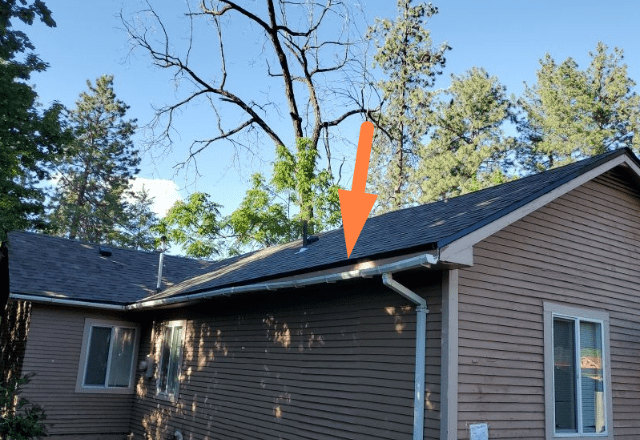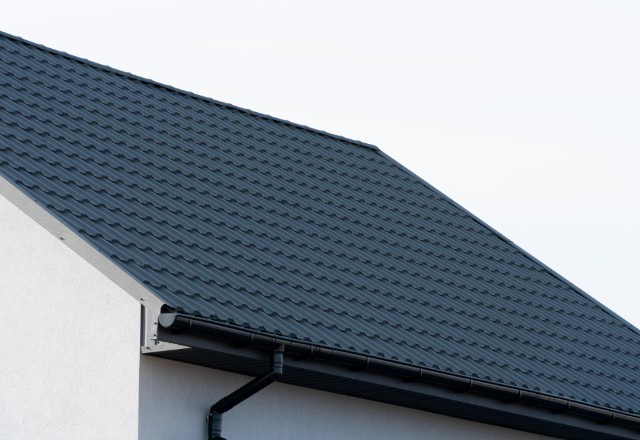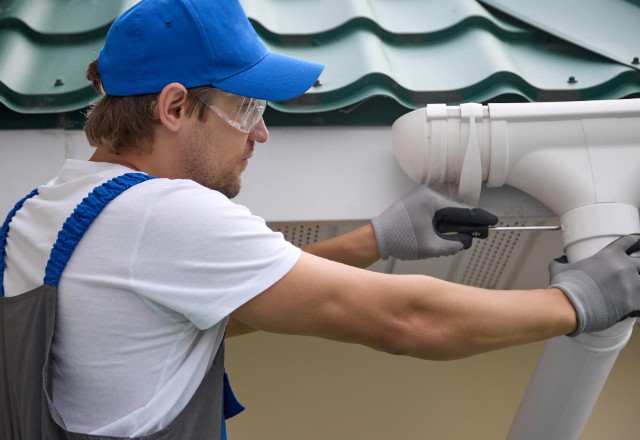When it comes to roof replacement, one of the most common questions homeowners ask is, “Are gutters included in roof replacement?” The answer to this question is not always straightforward, as it depends on various factors, such as the condition of your existing gutters, the roofing contractor you choose, and the specific package deal they offer. In this comprehensive article, we’ll explore the intricacies of gutter inclusion in roof replacement and provide you with the information you need to make an informed decision.
Understanding Roof Replacement
Roof replacement is the process of removing an old, damaged, or worn-out roof and installing a new one. There are several reasons why homeowners may need to replace their roof, including:
- Age: Most roofs have a lifespan of 20-30 years, depending on the materials used and the quality of installation. As a roof approaches the end of its lifespan, it becomes more susceptible to leaks, drafts, and other issues.
- Severe weather damage: Extreme weather events, such as hail storms, hurricanes, or heavy snowfall, can cause significant damage to a roof, necessitating replacement.
- Persistent leaks: If a roof develops persistent leaks that cannot be effectively repaired, replacement may be the most cost-effective solution.
- Energy efficiency: Upgrading to a more energy-efficient roofing material can help homeowners save on heating and cooling costs while improving the overall comfort of their home.
Common materials used in roof replacement include:
- Asphalt shingles
- Metal roofing
- Tile roofing
- Synthetic roofing materials
Each material has its own advantages and disadvantages in terms of durability, aesthetics, and cost. It’s essential to consult with a professional roofing contractor to determine the best option for your home and budget.
The Crucial Role of Gutters
Gutters play a vital role in protecting your home from water damage. They are designed to collect rainwater from your roof and divert it away from your foundation, preventing a wide range of moisture-related issues, such as:
- Erosion around the foundation
- Basement flooding
- Mold and mildew growth
- Damage to fascia, siding, and landscaping
When gutters are functioning properly, they help extend the life of your roof and protect your home’s structural integrity. However, when gutters are damaged, clogged, or missing, they can lead to costly repairs and even compromise the safety of your home.

Factors Determining Gutter Inclusion in Roof Replacement
Whether or not gutters are included in roof replacement depends on several factors, including:
Condition of Existing Gutters
If your existing gutters are in good condition and compatible with your new roof, your roofing contractor may recommend keeping them in place. This can help you save money on the overall cost of your roof replacement project. However, if your gutters are damaged, leaking, or sagging, it’s often more cost-effective to replace them along with your roof.
Package Deals
Some roofing companies offer package deals that include both roof replacement and gutter installation. These deals can be advantageous for homeowners, as they often provide a discounted price for bundling services together. When considering a package deal, be sure to ask about the quality of the gutters being installed and whether they come with a warranty.
Contractor Preferences
Each roofing contractor has their own preferences and standard practices when it comes to gutter inclusion in roof replacement. Some contractors may always recommend replacing gutters, while others may assess the situation on a case-by-case basis. It’s important to discuss your gutter needs with your contractor and get their professional opinion on the best course of action for your home.
Scenario | Gutter Replacement Recommendation |
Gutters in good condition | May not be necessary |
Gutters damaged, leaking, or sagging | Recommended |
Package deal includes gutter installation | Recommended |
Contractor assesses on a case-by-case basis | Varies |
Signs It’s Time to Replace Gutters Along with Your Roof
There are several signs that indicate it’s time to replace your gutters along with your roof:
- Cracks or holes in gutters: If you notice cracks or holes in your gutters, it’s a clear sign that they need to be replaced. Even small cracks can allow water to leak through, causing damage to your fascia, siding, and foundation.
- Sagging or pulling away from the fascia: Gutters that are sagging or pulling away from the fascia board are no longer functioning properly. This can be caused by a buildup of debris, improper installation, or damage from severe weather.
- Rust or corrosion: If your gutters are made of metal and show signs of rust or corrosion, it’s time to replace them. Rust can weaken the structural integrity of your gutters, making them more susceptible to leaks and damage.
- Leaks or water damage around the foundation: If you notice water pooling around your foundation or signs of water damage, such as cracks or erosion, it may be a sign that your gutters are not effectively diverting water away from your home.
- Gutters are older than 15-20 years: Like your roof, gutters have a limited lifespan. If your gutters are more than 15-20 years old, it’s a good idea to consider replacing them, even if they appear to be in good condition.
Replacing your gutters and roof simultaneously can provide several benefits, including:
- Cost savings on labor and materials
- Cohesive, matching appearance for your home’s exterior
- Improved water diversion and protection for your home

Choosing the Right Roofing Contractor
When selecting a roofing contractor for your gutter and roof replacement project, it’s essential to do your research and choose a reputable, experienced professional. Here are some tips to help you make the right choice:
- Check for proper licensing and insurance: Make sure your roofing contractor is licensed to work in your state and carries adequate liability insurance and workers’ compensation coverage.
- Look for experience: Choose a roofing contractor with a proven track record of successfully completing gutter and roof replacement projects similar to yours.
- Read reviews and ask for references: Read online reviews and ask the contractor for references from past clients. This can give you a better idea of the quality of their work and their customer service.
- Get detailed estimates: Request detailed, written estimates from multiple contractors and compare them carefully. Make sure the estimates include all aspects of the project, including gutter replacement if desired.
- Ask about their approach to gutter replacement: If you’re considering replacing your gutters along with your roof, ask each contractor about their approach to gutter replacement and whether they recommend it for your specific situation.
Be cautious of contractors who:
- Pressure you to make an immediate decision
- Offer prices significantly lower than competitors
- Request full payment upfront
- Lack proper licensing or insurance
DIY vs. Professional Gutter and Roof Replacement
While some homeowners may be tempted to tackle gutter and roof replacement as a DIY project to save money, it’s important to consider the risks and challenges involved. Roofing work can be dangerous, requiring proper safety equipment, knowledge, and experience. Improper installation can lead to leaks, water damage, and other costly issues that may not be immediately apparent.
Hiring a professional roofing contractor ensures that your gutter and roof replacement is completed safely, efficiently, and to a high standard of quality. Professional contractors have the knowledge, skills, and tools necessary to get the job done right the first time, saving you time, money, and stress in the long run.

Maintaining Your Gutters and Roof
Regular maintenance is key to extending the life of your gutters and roof and preventing costly repairs. Here are some tips for keeping your gutters and roof in top condition:
- Clean gutters regularly: Remove debris, leaves, and other buildup from your gutters at least twice a year, or more frequently if you have many trees near your home.
- Inspect gutters and downspouts: Regularly check your gutters and downspouts for signs of leaks, cracks, or sagging, and make repairs as needed.
- Trim overhanging branches: Cut back any tree branches that hang over your roof to prevent damage and reduce the amount of debris that accumulates in your gutters.
- Schedule professional inspections: Have a professional roofing contractor inspect your roof annually to identify and address any minor issues before they escalate into major problems.
- Repair damage promptly: If you notice any damaged shingles, flashing, or other roofing components, have them repaired as soon as possible to prevent leaks and further damage.
By following these maintenance tips, you can help ensure that your gutters and roof continue to protect your home effectively for years to come.
Conclusion
In conclusion, the answer to the question “Are gutters included in roof replacement?” is not always straightforward. It depends on various factors, including the condition of your existing gutters, the roofing contractor you choose, and the specific package deal they offer. When considering a roof replacement project, it’s essential to discuss your gutter needs with your contractor and carefully weigh your options before making a decision.
By understanding the importance of gutters, choosing a reputable roofing contractor, and maintaining your gutters and roof regularly, you can ensure that your home remains well-protected from water damage and other issues. Remember, investing in quality gutter and roof replacement can provide long-lasting benefits for your home and your peace of mind.



 509-201-4190
509-201-4190
